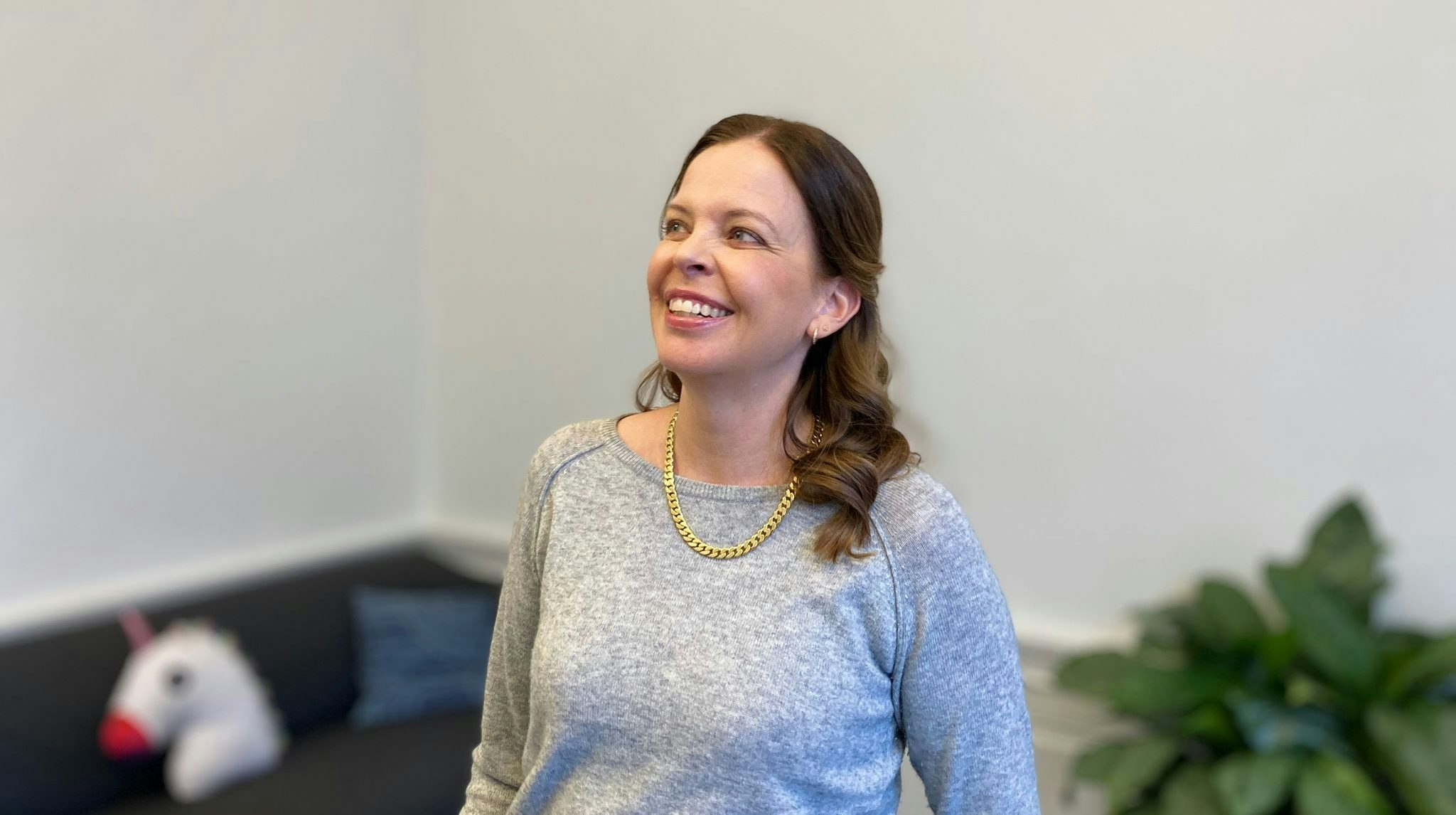Squeezed between two superpowers, China and America, that outpace it in every single area — research, innovation, space tech, investment and innovation — Europe is having an identity crisis.
Europe and (most of) its countries have a great track record when it comes to a healthy economy, democracy and the general functioning of society.
But has this made us complacent? And is it holding us back?
When it comes to AI, undoubtedly so. China and the US treat AI and data as new infrastructure and invest enormously in both to change for the future. They invest via a new lens, they set new goals and use new vehicles for investments — and they achieve results.
China’s methods are frequently disregarded in Europe as something we should not learn from because we have different politics and values. Because China puts the vision of the institution above its individual citizens.
But it is hard to disregard the fact that China is setting clearly measurable goals for every industry sector and reshaping its economic structure to support the reaching of those goals. Investing hundreds of billions is having an effect too.
It’s easier for us to be inspired by the US, as we share more values. One of the largest free markets in the world, the US makes enormous investments into innovation and change — its willingness and celebration of taking risks is central to this, as well as the mantra of chasing dreams that is ingrained in the national soul.
Clear goals and visions for the future and a boldness to change is why the US and China surge ahead in research.
Meanwhile, for decades, Brussels and the EU member states have invented excuses to avoid having to change. While the US and China change the world, we regulate and talk about ethics.
Sweden opts for what is safe
Take Sweden. Swedes point to how well we have done, how well off we are right now. Frequent polls, rankings and awards highlight our tech successes. Sweden opts for what is safe.
Over the past few years, Sweden has ranked as a top startup nation and claims the top number of unicorns per capita. Fantastic. But what does that actually mean?
A lot of people start new companies in Sweden, yes. But how many of those who stay in Sweden are able to scale, become resilient companies and change the world for the better?
How many have changed an industry? Or created a new one?
Sweden has, in the past 50 years, produced only one world-changing product: Spotify. Sweden’s position as the world’s third-biggest music producer probably contributed to making this possible. But Daniel Ek’s boldness and willingness to take risks, and those who invested in him, was what ultimately changed the music industry.
Sweden does not provide the same amount of early-stage investments as the US does. It lacks the kind of money needed for innovators to be able to take the risk needed to create truly innovative companies.
According to the OECD, the venture capital investments accessible for the adult population in 2022 were $157 per capita for Sweden, and $920 per capita for the US.
Even more significant in 2022, in the US 12% of all VC investments went to seed rounds, but in Sweden it was only 4%. Three times higher risk-taking in very-early-stage ideas will generate more innovation.
The Swedish Innovation Agency plays an important role in helping companies innovate, but the grants have stayed roughly the same for the past two decades. The standard grant is €40k: no researcher or engineer can quit their job and realise a world-changing idea for that money.
Yes, it is painful to let go of our cosy reputation of being the best. But in the words of renowned rock climber Alex Honnold: “Nothing great ever came from being cosy”.
A big obstacle to European change is that many of our leaders reach their leadership position by playing it safe, by adhering to the existing structures and the game of bureaucracy.
On the way up, most refrain from sticking their neck out. The leaders who have for so long been rewarded for being risk-averse, are the ones we now need to lead radical change in how we approach innovation.
So, what does Europe need to do to find its role?
Change doesn’t mean turning our back on our history. Both Sweden and Europe can be proud of their history, and yet we can still start a discussion about what future we want to create.
We must allow a truly open discussion about what could be next and what obstacles are in the way. We need to create room for new, bold ideas that might seem outlandish at first.
Dare to pursue ideas and then give them enough space to materialise into something that can be assessed and evaluated on whether it is a new path that we want to scale.
Europe desperately needs a vision
In order to change, Europe needs a vision for the future. But not a fluffy vision for the institution of the EU. We need a vision grounded in the perspectives of our future citizens. A vision that paints a concrete picture of what is possible for future generations in a future Europe.
We need to set clear and measurable goals for what we aim to achieve because without them, there is no guidance.
So let me lay down the first pen strokes — not in an attempt to present a final vision, but to start discussions and catalyse thoughts, more ideas, counter-arguments, about what is possible and impossible, and what needs to be done to get there.
A European child is born into a healthcare system that utilises their health data and with the help of AI provides preventive care to make sure the child reaches their fullest health potential throughout life. No European waits to break down in the future. We receive regular checkups and service to minimise breakdowns.
A child in Europe is given an education that, with the help of technology, is individually tailored to their unique learning behaviour. So that more children reach their unique potential in life.
A child in Europe is given education that makes them a competent whole human being, ready for an ever-faster changing world that requires continuous adaptation.
Gone are the days when we had one job for life or asked our children what they wanted to be when they grew up.
The higher education systems in Europe have an even distribution of students across all ages and have switched to membership models their students return to throughout life.
The higher education system in Europe teaches students to work alongside AI, no matter if the subject is classical composition, painting or neuroscience.
Everything that can be made with AI will be made with AI.
Europeans who want to do research have access to an easy and smooth harmonised grant structure that provides really large grants to allow for truly free and groundbreaking research. Europeans who do research have easy access to an ever-growing data pool of scientific data.
Europeans who want to pursue their dreams and start innovative companies have access to an easy and smooth harmonised grant structure that provides large grants to allow for citizens to take their accumulated expertise and try to disrupt industries. The same structure allows for failures and retries, while supporting their journeys and capturing learnings.
European companies have access to a joint data infrastructure that is for everyone in all sectors. All companies can easily share, collaborate and use the wealth of data across Europe with clear legal guidelines. European companies have a clear economic incentive structure in place to share their data with the common European data pool.
And European researchers and organisations have access to central and distributed computing power so they can utilise that data pool.
European citizens control and own their own personal data. All European citizens have a data passport where they control how their personal and health data is used. They always have overview and control of what their data is used for and what value it contributes to.
Europeans are no longer giving away their data for free to the state or companies. Rather they actively participate in transactions with the public and private sector. Citizen data ownership allows the valuation of personal data and can create a new part of the European economy.
AI technology supercharges democracy across Europe, giving the EU and its member countries super-hearing, the ability to engage its citizens better in the democratic process. Large language models (LLMs) are used to truly listen to the voices, needs, wishes and ideas of the citizens about the future of their society — without forcing them into historical structures.
No more whisper games where politics is disconnected from the realities of citizens. The elected representatives in the EU and its member countries are, as a result, more data-driven by the direct needs and wishes of their citizens. And transparent.
So what does Europe need to do?
Begin the discussion and start painting the vision. Identify the obstacles that are in the way of reaching the vision. Start defining goals and fund them. Celebrate attempts to change, even when they fail. Do not only invite experts to Brussels to provide safe advice on yet another policy or report.
Provide the platform and use existing technologies such as LLMs and open source approaches to involve more voices. Facilitate the discussion, make it possible, listen and allow for off-the-wall ideas. Support people who dare to try change.
Ask ourselves do we need to do it like this? Is there another way?



